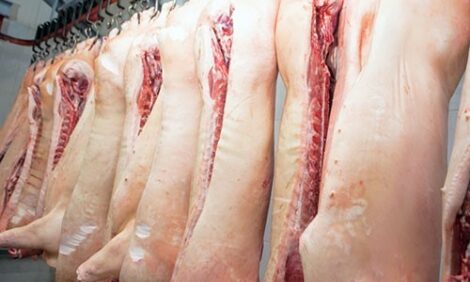



Four steps to turn US-China framework into actual certainty and stability for American farmers
Farmers for Free Trade applauds progress but cautions that much work remainsWashington DC, 21 May 2018 - Brian Kuehl, executive director of Farmers for Free Trade, released the following statement on the framework the US and China announced over the weekend as part of negotiations on avoiding additional tariffs. Farmers for Free Trade is a bipartisan coalition that has been organising farmers nationally in support of free trade and that has spearheaded advocacy efforts to protect ag trade and open new markets.
“The framework that the US and China agreed to is an important first step in de-escalating trade tensions that have hurt the American heartland. We applaud the Administration’s focus on supporting US ag exports in this framework, but note that there is still an enormous amount of work that must be done to take this agreement from concept to reality and to deliver certainty and stability to farmers and ranchers. Specifically, as the US prepares to send Cabinet officials to China to iron out details of this agreement and as NAFTA negotiations continue, Farmers for Free Trade believes that Administration officials should focus on four outcomes that will help deliver for American agriculture.
“First, US officials need to address the non-tariff barriers that have always been a primary mechanism China uses to keep American agriculture exports lower than they should be. USTR’s own analysis has shown that China has long erected barriers to pork, poultry, beef and other commodities long after importation has been declared safe under international guidelines. We can’t meaningfully increase ag exports to China without addressing these barriers on which the Chinese have routinely refused to make meaningful progress.
“Second, the US needs to provide farmers with a clear strategy for also defusing tensions around steel and aluminum tariffs and NAFTA. That means answering the question of whether China will also drop the retaliatory tariffs impacting farmers right now on nuts, fruit, wine, pork and other ag exports that stem from steel and aluminum tariffs are. It also means providing certainty on NAFTA by ending demands for the agreement to end every five years and for completely ending the threat of unilateral withdrawal from the agreement. Until there is certainty on these fronts, a deal on 301 tariffs alone will do little to ease the anxieties of farmers who make investments years in advance and whose biggest threat is unpredictability.
“Third, we need the US Department of Agriculture at the negotiating table. The professionals at USDA are not only the chief advocates for American ag exports, they’re also the experts. We hope that when the delegation of US officials travels to China, Secretary Perdue and his team will lead talks with China on how they will not only increase exports but finally tear down the non-tariff barriers that have been a major impediment to getting our products into their market.
“Finally, we need to get back in the business of opening new markets for American ag exports. A major component of giving farmers confidence and predictability needs to be a focus on growing, not contracting, market access across the globe. In order to do that we need to pivot away from a focus on revisiting old agreements to opening new ones. Our competitors have spent the last half-decade negotiating access that has given their ag exports a competitive advantage while we’ve been hamstrung both by policy and politics. It’s time to end the brinksmanship and launch proactive, constructive relationships with countries that are hungry for the world’s best ag products.”
As reported by Farmers for Free Trade









